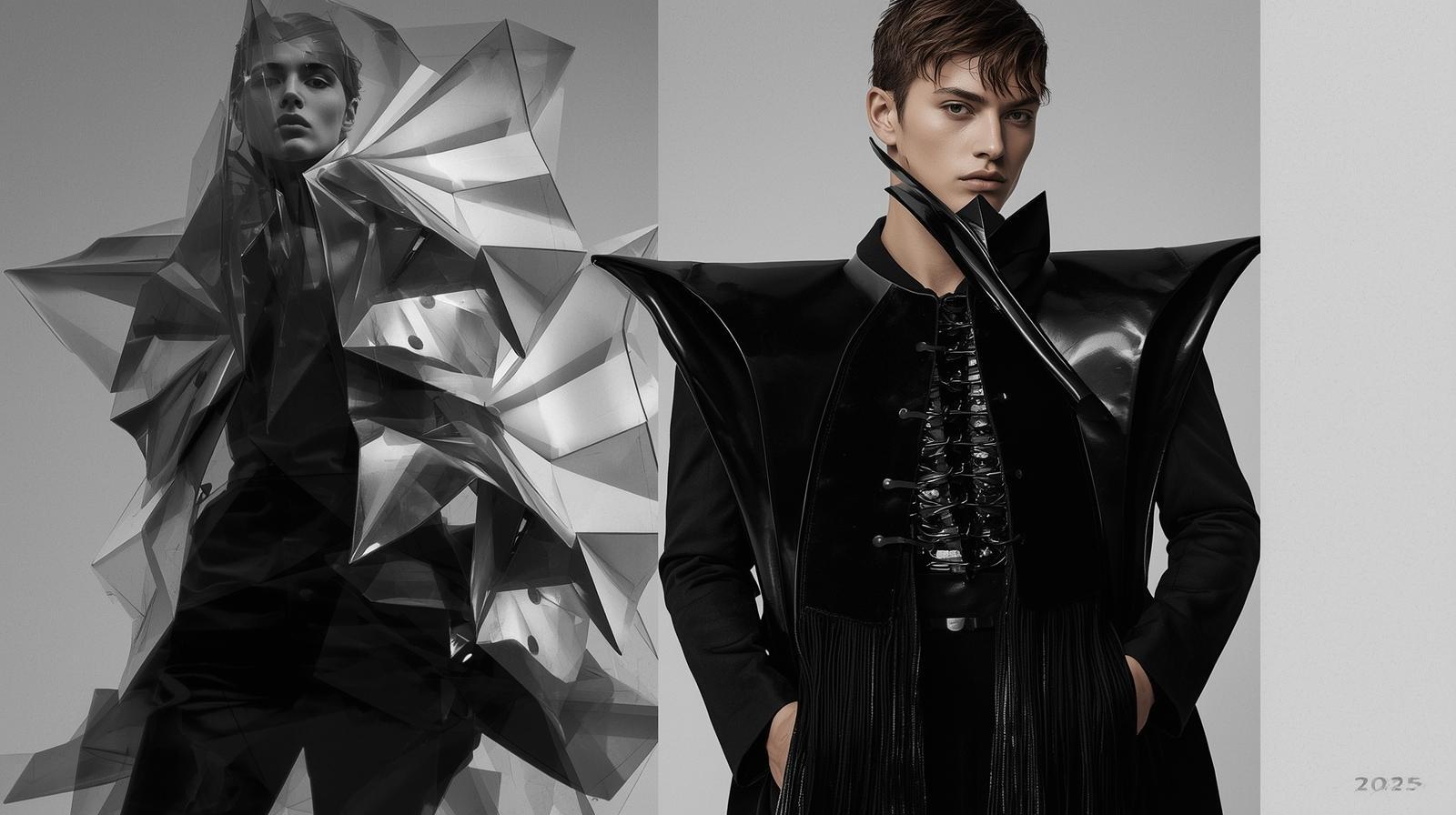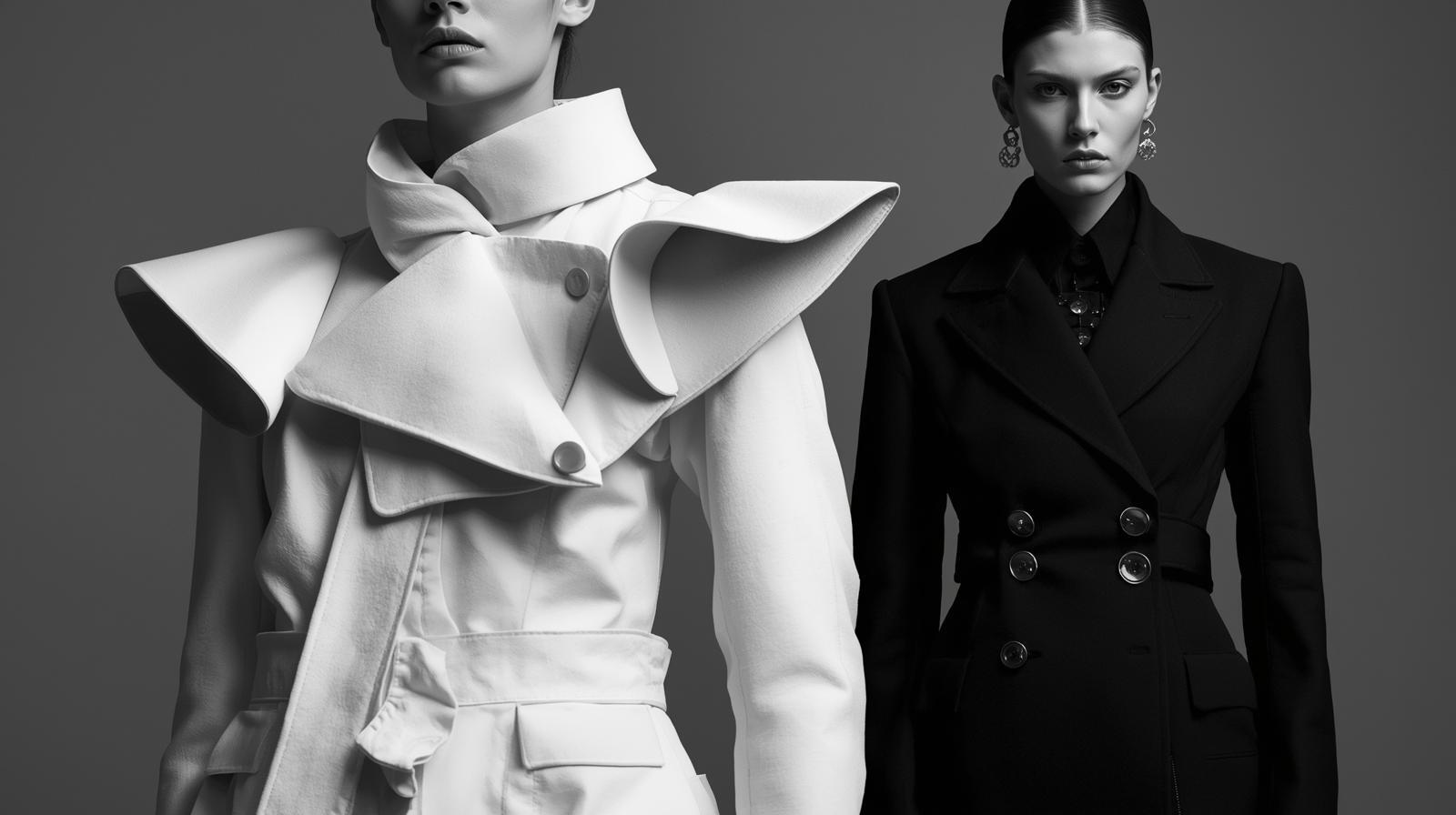9th Oct 2025
Architectural Tailoring - Sculpted Shoulders & Structure in Fashion 2025

Fashion evolves continuously, and in 2025, architectural tailoring emerges as a transformative trend that enhances sculpted shoulders and structure in your wardrobe. With this innovative approach, you can expect garments that not only flatter your figure but also offer a bold statement of style. The blend of tailored precision with avant-garde design principles empowers you to embrace a new level of sophistication that balances form and functionality. Explore how this movement can redefine your fashion choices and elevate your personal aesthetic.
Historical Context
Understanding the roots of architectural tailoring reveals its profound influence on contemporary fashion. You can trace the origins back to the late 19th century, when tailoring evolved from mere functionality into an art form, characterized by the incorporation of structure and silhouette. The desire to create garments that not only fit well but also sculpted the body, providing a canvas for self-expression, drove this shift. Designers further refined these concepts in the 20th century, blending tailoring techniques with avant-garde aesthetics to create innovative silhouettes.
Evolution of Tailoring in Fashion
Significant transformations have marked the journey of tailoring, with each era adding layers of complexity. Early tailoring emphasized fit and durability, but the aesthetic revolution of the 1920s introduced a newfound emphasis on sophisticated silhouettes. As fashion evolved, so did the techniques—embracing both traditional craftsmanship and modern technology. The blending of tailored elements with casual wear in the late 20th century allowed for a more dynamic interpretation of classic styles, leading to today’s architectural approach, where garments exhibit sculptural qualities.
Key Figures in Architectural Design
Several influential designers have shaped the architectural approach in fashion, revolutionizing how garments are constructed. You can look to figures like Christian Dior for his "New Look," which emphasized a cinched waist and full skirt that redefined femininity post-war. Yohji Yamamoto's avant-garde styles, with innovative draping and layering, introduced the idea that clothing could possess not just functionality but also artistic value. More recently, Issey Miyake's use of technology in textiles has allowed for sculptural forms that challenge traditional notions of tailoring.
Architectural design in fashion flourished with the emergence of avant-garde designers who revolutionized the shape and structure of clothing. You might consider Alexander McQueen, whose bold tailoring brought forth pieces that resembled architectural installations, merging fashion with art. His works showcased the potential for clothing to act as a three-dimensional canvas, challenging conventional silhouettes. Similarly, Martin Margiela's deconstructed pieces displayed manipulated forms that questioned the essence of tailoring, allowing for a multifaceted exploration of identity through wearable structures. These pioneers continue to influence today's fashion landscape, where tailoring is no longer just about fit but also about form and expression.

Sculpted Shoulders: A New Aesthetic
Sculpted shoulders are undergoing a stunning revival, reshaping contemporary silhouettes and asserting a bold presence in fashion. Tailoring techniques that emphasize dramatic lines and innovative padding create garments that frame the body and enhance your overall posture. This reimagined aesthetic balances feminine softness with structured strength, offering versatility for both casual and formal wear. Designers are now experimenting with unique cuts and materials, allowing you to push the boundaries of traditional shoulder lines and embrace a more distinct personal style.
The Role of Structure in Modern Design
In today’s fashion landscape, structure is important for defining a modern design ethos. Incorporating architectural elements such as linear forms and asymmetrical shapes allows you to explore new expressions of identity and individuality. Structured pieces create a sense of permanence, making your wardrobe choices feel more intentional and empowered. The emphasis on tailored aesthetics invites you to invest in high-quality items that promise durability while making a statement.
Influences from Architecture and Art
Architecture and art are pivotal influences on today's fashion trends, pushing designers to seek inspiration beyond traditional garment construction. Incorporating principles from renowned architectural styles, such as Brutalism and Art Deco, invites you to explore fashion as a three-dimensional canvas. Textures, shapes, and materials derived from these disciplines encourage innovative layering techniques and refined storytelling through clothing. You’ll find that the interplay between fashion and these artistic movements enhances both visual interest and emotional resonance in your wardrobe choices.
The interplay of architecture and art inspires a rethinking of silhouettes, pushing trends toward the avant-garde. Designers draw on the clean lines and bold geometries found in contemporary buildings, embracing elements like exposed seams and structured draping. The dramatic amalgamation of hard and soft elements, reminiscent of sculptural forms, allows your clothing to become a statement piece. Collections influenced by artists like Frank Gehry challenge conventional designs, inviting you to experience fashion not just as clothing but as an immersive narrative tailored to your personal story.
Material Innovations
Fashion in 2025 embraces an array of material innovations that redefine how garments are constructed and perceived. Designers are integrating smart textiles, nano-coatings, and bio-fabricated materials that respond to environmental stimuli, enhancing performance while offering unprecedented styling options. This evolution not only elevates aesthetic appeal but also enriches functionality, enabling garments to adapt to the wearer’s needs in real time.
Fabrics that Enhance Structure
You’ll find that contemporary tailoring incorporates fabrics with inherent structural qualities, such as advanced weaves and blended textiles that maintain form without compromising comfort. Innovations like 3D knits or woven composites provide a sculptural effect, molding to the body while allowing for dynamic movement. Incorporating these fabrics ensures a refined silhouette, which enhances your overall look.
Sustainable Practices in Tailoring
Sustainable practices are at the forefront of modern tailoring, prioritizing environmentally friendly production methods and materials. You’ll discover an increasing use of organic fibers and recycled materials in tailored garments, significantly reducing waste. Innovative circular fashion models contribute to a more sustainable industry by designing textiles for longevity and recyclability.
Sustainable practices in tailoring emphasize not just the materials used but also the entire lifecycle of garments. Techniques such as zero-waste pattern making and the use of biodegradable textiles allow you to invest in pieces that minimize environmental impact. Brands like Stella McCartney showcase this commitment by employing eco-conscious materials while maintaining luxurious aesthetics. Additionally, engaging in local craftsmanship reduces carbon footprints, ensuring that your tailored wardrobe aligns with both style and ethical values.

The Role of Technology
The integration of technology into fashion design is transforming traditional approaches, allowing for a more bespoke and personalized experience. You can now expect enhanced precision in tailoring, significantly improving fit and comfort while also minimizing waste. By utilizing data-driven insights, designers are crafting garments that not only suit your aesthetic preferences but also align with sustainable practices.
3D Printing and Tailoring
You can experience the future of fashion with 3D printing, which enables designers to create intricate patterns and structures that were previously impossible. Customized components can be produced on-demand, reducing lead times and inviting individualized designs tailored specifically to your body shape.
Digital Design Tools
Advanced digital design tools streamline the creative process, allowing for rapid prototyping and revisions. You can leverage software that enables 3D modeling, offering a comprehensive view of how garments will look and fit before they are physically made. This technology fosters real-time collaboration between designers and clients, ensuring your preferences are integrated into the final product.
Access to platforms like CLO 3D and Adobe Illustrator allows you to explore various design iterations visually, aiding decision-making throughout the creation process. With these tools, you can simulate how different fabrics behave and visualize tailored fittings without the need for physical samples. As a result, the design experience becomes more interactive and collaborative, giving you greater input into the outcome and highlighting your unique style preferences.
Cultural Influences on Tailoring
Cultural narratives and identities deeply intertwine with tailoring in 2025, shaping how garments communicate personal aesthetics. You see this influence reflected in global movements that champion sustainability and inclusivity, where traditional methods meet contemporary designs. Notably, artisans from regions steeped in craft heritage are gaining recognition, blending age-old techniques with modern forms to create rich, textured tapestries of diverse influences.
Global Trends in Fashion
Across the globe, the blending of traditional tailoring with avant-garde styles has emerged as a defining trend. You can spot silhouettes that incorporate elements from various cultures, resulting in a truly cosmopolitan wardrobe. Designers are increasingly drawing inspiration from streetwear's comfort and functionality, which you’ll observe in tailored pieces that prioritize wearability without sacrificing elegance.
Regional Variations in Sculpted Styles
Regional variations in sculpted styles showcase the interplay between locality and global fashion trends. In cities like Tokyo, you embrace bold, exaggerated shoulder lines symbolizing empowerment, while in Milan, tailoring is more streamlined, emphasizing sleekness and structure. Each region infuses its distinct cultural essence into sculpted designs, making your wardrobe a reflection of global influences.
The notion of sculpted styles varies significantly between regions. For instance, in South Africa, vibrant fabrics paired with structured silhouettes capture the essence of rich heritage and communal celebrations. Meanwhile, Scandinavian countries lean towards minimalism, with sculpted tailoring focusing on subtle details and practicality. Designers in these areas often incorporate local textiles, using them to tell stories of identity and place, allowing you to wear a piece that resonates with cultural significance and aesthetic appeal.
Future Trends in Fashion Tailoring
Tailoring in 2025 will redefine traditional boundaries, fusing artistry with technology. Expect to see an increased emphasis on personalization, where bespoke techniques cater to individual body types and preferences. Automation will play a crucial role, helping designers streamline their processes while enhancing craftsmanship. Innovations in smart textiles will enable dynamic fits that adapt to movement, ensuring both style and comfort are prioritized in contemporary tailoring.
Predictions for 2025 and Beyond
By 2025, tailored pieces will reflect a blend of sustainability and high-tech fabrics, addressing consumer demands for ethical fashion. Expect to see designs that incorporate upcycled materials alongside cutting-edge textile technology, creating garments that are not only stylish but also environmentally conscious. Tailoring will cater to versatility, allowing you to transition seamlessly between professional and casual settings.
The Intersection of Fashion and Function
The merging of fashion and function signifies a remarkable evolution in tailoring, where garments fulfill practical needs while remaining fashion-forward. Innovations like moisture-wicking capabilities and temperature-regulating fabrics will be standard, making tailored clothing suitable for all environments. As you navigate daily life, your tailored attire will enhance performance without compromising aesthetic appeal.
This intersection reflects a heightened awareness of how you interact with your clothing. The rise of athleisure-inspired tailoring combines formal elements with functional attributes, allowing for movement without sacrificing elegance. Brands like Lululemon are already pioneering this trend, integrating performance textiles into stylish cuts. Expect this trajectory to shape your wardrobe, where tailored garments look refined and support your active lifestyle, effectively merging your need for practicality with your desire for sophistication.
To wrap up
Upon reflecting, you will find that Architectural Tailoring, with its sculpted shoulders and structural elegance, represents a significant evolution in fashion for 2025. This trend emphasizes the importance of tailored silhouettes that enhance your form and convey sophistication. As you embrace this style, consider how these refined designs can elevate your wardrobe, providing both comfort and a commanding presence. Ultimately, integrating architectural elements into your garments will allow you to express individuality and confidence in an increasingly dynamic fashion landscape.


